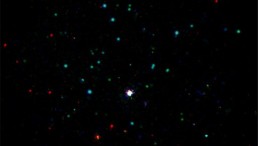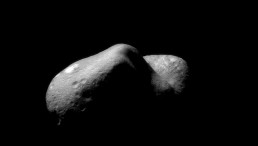The University of Gottingen has led a team of international researchers which discovered two new Earth-like planets near one of our closest neighboring stars. About 12.5 light years away from the Earth, "Teegarden's star" is one of the smallest known stars. It is only about 2,700 °C warm and about ten times lighter than the Sun. While the star is so close to the Earth, it wasn't discovered until 2003. For nearly three years, the scientists observed the star. They published the result of their study in the journal Astronomy and Astrophysics.
The existence of two planets is evident in the data of these researchers. The lead author of the study, Mathias Zechmeister of the Institute for Astrophysics at the University of Gottingen said that the two planets resemble the inner planets of our solar system. They are only slightly heavier than Earth and are located in the so-called habitable zone, where water can be present in liquid form.
The suspicion of the astronomers was that the two planets could be part of a larger system. Professor Stefan Dreizler of the University of Gottingen explained that many stars are surrounded by systems with several planets. Teegarden's star is the smallest star where researchers have so far been able to measure the weight of a planet directly. One of the scientific directors of the project, Professor Ansgar Reiners of the University of Gottingen, said that this discovery is a great success for the Carmenes project, which was specifically designed to search for planets around the lightest stars. The Universities that carried out the carmenes include Gottingen, Hamburg, Heidelberg, and Madrid.
While scientists know the planetary systems around similar stars, they have always been detected using the "transit method" - the planets have to pass visibly in front of the star and darken it for a moment, which only happens in a quite small fraction of all planetary systems. Such transits have not yet been discovered for the new planets. But the system is located at a special place in the sky; from Teegarden's star, it is possible to see the planets of the solar system passing in front of the Sun.
Reiners noted that an inhabitant of the new planets would, therefore, have the opportunity to view the Earth using the transit method. The new planets are the tenth and eleventh discovered by the team.














